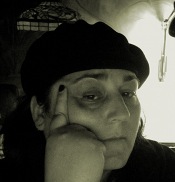One of the things that’s weird to work with in the Holmes, Inc. class is the extremely compressed story-telling. In many ways, this writing feels like Golden Age comics: full stories are being told in a small number of pages. The folks who are doing both writer and artist duties have 5 pages to work with; people who are solely-writers or solely-artists have 7 pages. That’s not a lot of story-telling space. And, in particular, I find this degree of compression makes it hard to give things nuance.
And one of the consequences of that, is a reliance on story-telling shorthand. Characters are simply “bad guys” or people who give us information. Cute kid. Evil, but less-than-effective henchmen. Kidnappee. Mm.
It has been an interesting exercise in cutting a story down to its bare essentials. My only real quibble is that, because we’re all using the same formula, I feel like most of the stories are hitting the same note. There’s that Brecht quotation: “Bad comedians are always laughing and bad tragedians are always crying.” (Although, hm. I went to Google-ify that, and it looks like all the top references to that quotation are instances of me repeating it. I was pretty damn sure that one of my theatre profs repeated it to me, and he’s supposedly Canada’s leading Brecht scholar. But maybe I’m misremembering.) Anyway, my point is that I’d love to see some more tonal variation. At the moment, it’s a little bit like Law and Order: case after case after case and not much time to sit with the characters.
Now, I say that knowing full well that the story I’m illustrating (written by classmate, Tuhin) is one of the few stories that seems to have a different tone. (Spoiler: there’s emo) Which, y’know, cool. But again, that tonal invariance reminds me of Golden Age comics.
